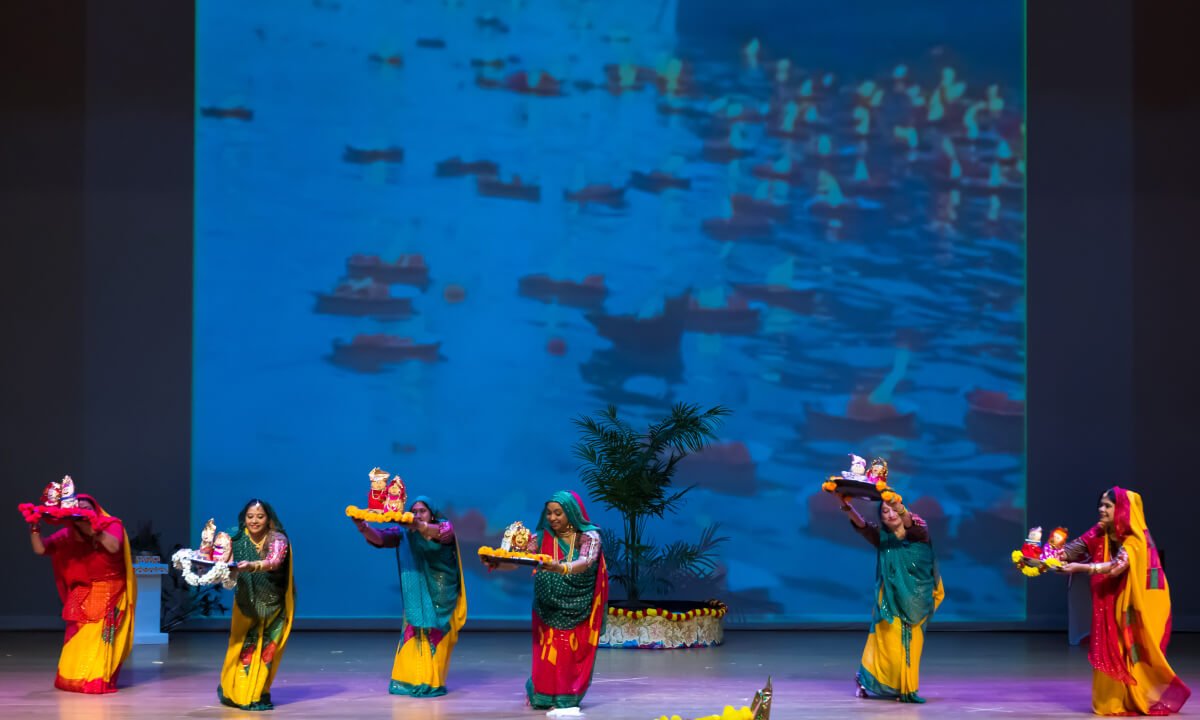folk dance
A Bihar folk dance celebrating sibling bonds during the Sama Chakeva festival with colorful clay figurines.

The Sama Chakeva folk dance is a cherished tradition originating from the Mithila region of Bihar, India, deeply rooted in the cultural practices of the Maithil Brahmins. This dance is closely associated with the Sama Chakeva festival, a unique celebration that honors the loving bond between brothers and sisters, similar to the Raksha Bandhan festival in other parts of India. The festival, observed during the Hindu month of Kartik (October-November), is marked by warmth, affection, and a vibrant display of colors and artistry.
During the Sama Chakeva festival, sisters create colorful clay figurines called “Chakeva birds” or “Sama birds,” symbolizing the love and dedication between siblings. These clay birds also represent the migratory birds that visit the Mithila region during this season, connecting the festival with the beauty of nature. Brothers, in turn, display these figurines in their homes and welcome their sisters with hospitality, celebrating the special sibling bond.
Colorful clay figurines used as props.
In the Sama Chakeva dance, performers—often young boys and girls—dress in vibrant traditional attire and mimic the movements of birds, capturing the grace and liveliness of the avian world. The dance is characterized by fluid, expressive gestures, intricate footwork, and graceful movements that resemble the behavior of birds, embodying the spirit of nature and familial affection. The choreography is inspired by the migratory birds, bringing an element of storytelling to the performance.
Women participating in the dance typically wear traditional Mithila-style saris, known for their bright colors and intricate patterns, adding a touch of local artistry and elegance. Men wear traditional kurta-pajamas, consisting of a long tunic-style kurta and loose-fitting trousers, often adorned with subtle embroidery or decorative elements, enhancing the visual appeal of the performance.
NSDA students performing Sama Chakeva on stage.
The music that accompanies the Sama Chakeva dance adds depth and enchantment to the performance. Instruments like the dholak (double-headed drum), harmonium, and flute provide rhythmic beats and melodious tunes that bring the dance to life. The combination of music and dance invites both participants and spectators into the joyous spirit of the festival, creating an atmosphere of celebration and unity.
The Sama Chakeva folk dance is more than just a performance; it is a cultural expression that celebrates the bonds of love between siblings and the beauty of nature. Through its vibrant performances, rich traditions, and deep-rooted significance, the Sama Chakeva dance fosters a sense of unity, harmony, and community among the people of Mithila, preserving a legacy of affection, respect, and cultural pride.